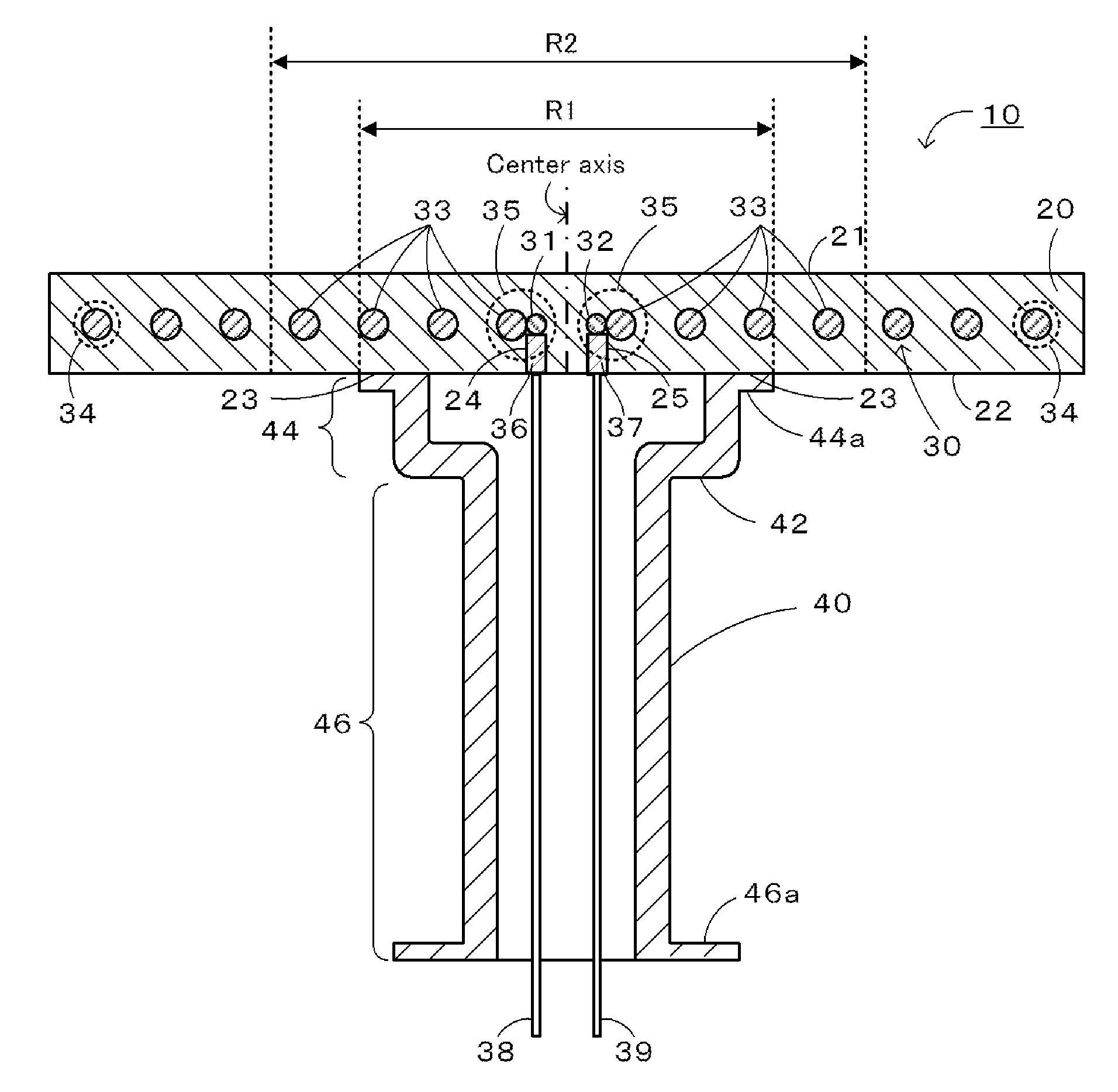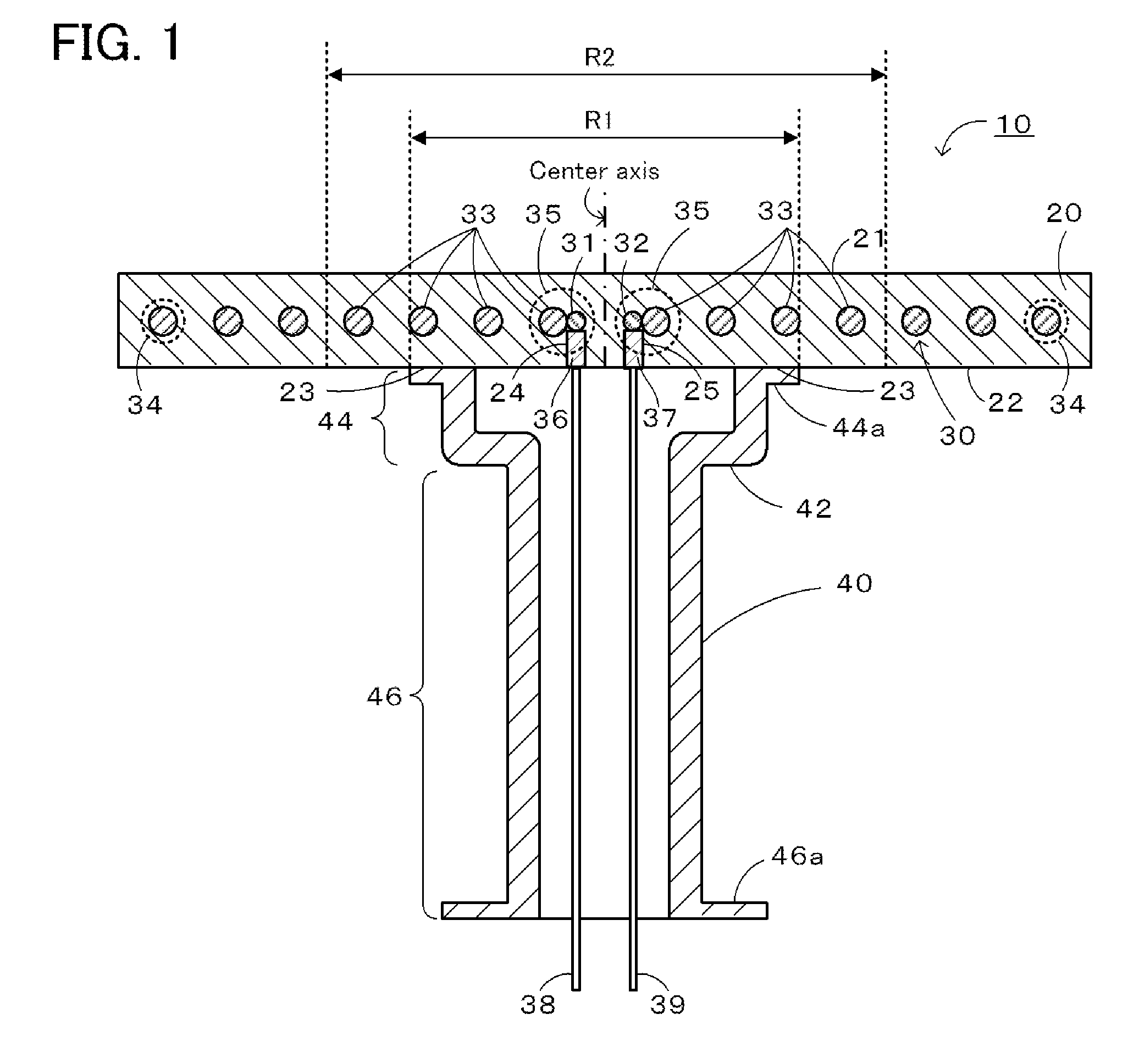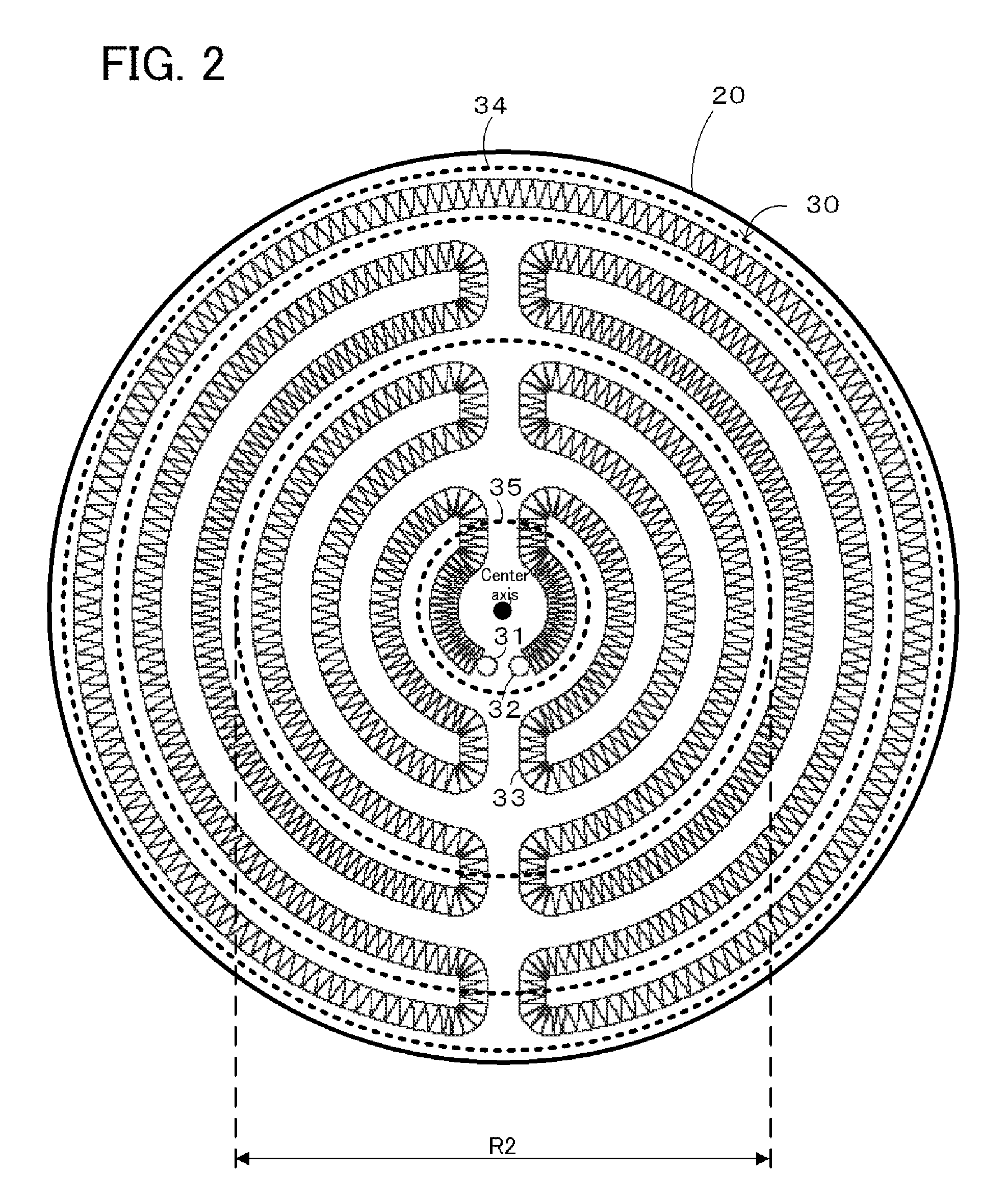Ceramic heater and method for making the same
a ceramic heater and ceramic technology, applied in the direction of heater elements, heater heating arrangements, resistive material coatings, etc., can solve the problems of widening the temperature difference between the center and the periphery, deteriorating the uniform heating property, etc., to prevent the flow of current in the wafer, good uniform heating property, and resistivity does not decrease
- Summary
- Abstract
- Description
- Claims
- Application Information
AI Technical Summary
Benefits of technology
Problems solved by technology
Method used
Image
Examples
example 1
[0058]In Example 1, a specific example corresponding to the ceramic heater 10 of the embodiment shown in FIGS. 1 and 2 was made by a method illustrated in FIG. 3. In particular, the example was prepared as follows.
[0059]First, the ceramic plate 20 was prepared. To 30 parts by weight of aluminum nitride powder (99.5° purity) containing 5 wt % yttria, 0.5 parts by weight polyvinyl alcohol serving as an organic binder and 100 parts by weight water were mixed to prepare a slurry. The slurry was spray-dried to prepare a powder A. A powder B was prepared in the same manner but with a slurry containing the organic binder in an amount 30 times larger. The prepared powders A and B were chemically analyzed to investigate the carbon content. The carbon content was 0.1 wt % in the powder A and 3 wt % in the powder B. Next, the powder A was laid in a die having an inner diameter of 350 mm and a recess was formed by pressing the powder with a die having a diameter of 350 mm and a middle portion (...
example 2
[0061]In Example 2, the ceramic heater 10 was prepared as in Example 1 except that a powder D was used instead of the powder B of Example 1. The powder D was prepared by mixing 30 parts by weight aluminum nitride powder (99.5 purity) containing 5 wt % yttria with 1 part by weight carbon black, 0.5 parts by weight polyvinyl alcohol serving as an organic binder, and 100 parts by weight water to make a slurry, and spray-drying the slurry to prepare a granular powder (referred to as powder D hereinafter). The carbon content in the powder D was 3.4 wt %.
example 3
[0062]In Example 3, a specific example corresponding to a ceramic heater 110 of an embodiment made by the method illustrated in FIG. 4 was prepared. In particular, the example was made as follows.
[0063]First, to 30 parts by weight of aluminum nitride powder (99.5% purity) containing 5 wt % yttria, 4 parts by weight polyvinyl alcohol serving as an organic binder and 100 parts by weight water were mixed to prepare a slurry. The slurry was spray-dried to prepare a granular powder as powder C. The carbon content in the powder C was 0.8 wt %. The powder C was laid in a die to form a disk having a thickness of 15 mm and a flat surface. Then a ring-shaped molybdenum mesh 60a (a metal mesh sheet prepared by interweaving molybdenum wires having a diameter of 0.12 mm) having an outer diameter of 325 mm and an inner diameter of 120 mm was placed in a die in a concentric manner. The powder C was further laid thereon to a thickness of about 1 mm and pressed with a groove-forming die identical to...
PUM
| Property | Measurement | Unit |
|---|---|---|
| diameter | aaaaa | aaaaa |
| diameter | aaaaa | aaaaa |
| diameter R1 | aaaaa | aaaaa |
Abstract
Description
Claims
Application Information
 Login to View More
Login to View More - R&D
- Intellectual Property
- Life Sciences
- Materials
- Tech Scout
- Unparalleled Data Quality
- Higher Quality Content
- 60% Fewer Hallucinations
Browse by: Latest US Patents, China's latest patents, Technical Efficacy Thesaurus, Application Domain, Technology Topic, Popular Technical Reports.
© 2025 PatSnap. All rights reserved.Legal|Privacy policy|Modern Slavery Act Transparency Statement|Sitemap|About US| Contact US: help@patsnap.com



